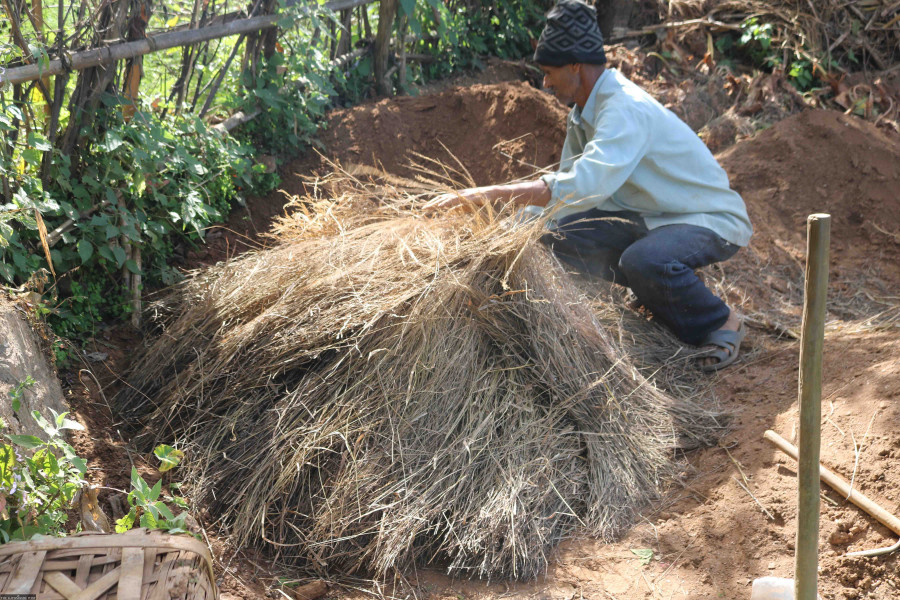Money
Farmers forced to store ginger in pits
Despite being an indigenous technique, it risks rotting.
Biplab Maharjan
The ginger farmers in Salyan, a district in Western Nepal, have been compelled to save the spice in a pit for next season’s harvest due to a lack of a cold storage facility.
Though they have been following the indigenous technique for decades, they say it involves the risk of rotting especially by the rain.
Suklal Puri, a local farmer at Malneta in Sharada Municipality-14, has buried nearly four quintals of recently harvested ginger in a pit near his house.
“This is the only option I have as there is no cold storage facility,” said Puri. “I will extract them in the planting season.”
If the root stalks aren’t preserved this way, we will have to buy them from outside the district which costs more, farmers say.
Gyan Bahadur Gharti, the largest producer of ginger in Malneta, has been using the same technique for three decades.
“I produce around 1 tonne of ginger every year,” said Gharti who has one acre of farm dedicated for growing the spice.
Besides selling the spice, Gharti also buys ginger from other farmers, saves them in the pits and sells them during the plantation season.
The ginger needs to be stored in the pits within a month of harvesting, otherwise its productivity decreases, farmers say.
However, storing them in the pits can cause them to rot or decay.
“When kept buried in the ground, the ginger have a higher risk of rotting during rainfall,” said Ved Bahadur Dangi, another farmer in the area. “Yet we have been taking the risk as there’s no other option available.”
“National Ginger Research Programme at Kapurkot, Agriculture Development Office and Prime Minister Agriculture Modernisation Project (Ginger Zone) spend a huge sum every year for the farming, production and marketing of ginger,” said Amrit Bahadur Dangi, a local farmer from Kotmaula. “However, none of them have taken any initiative in setting up a storage facility.”
However, Bharat Kumar Basnet, chief of the Agriculture Development Office, Salyan, claimed that they have not received many requests from farmers to build the cold storage facility.
“We haven’t been able to set up a cold storage facility as it's costlier and we haven’t received many requests from farmers either,” said Basnet.
Of the 10,000 families involved in ginger farming, 508 are from Malneta. Around Rs200 million worth of ginger is produced in Salyan every year, according to the office.




 17.12°C Kathmandu
17.12°C Kathmandu















